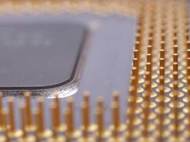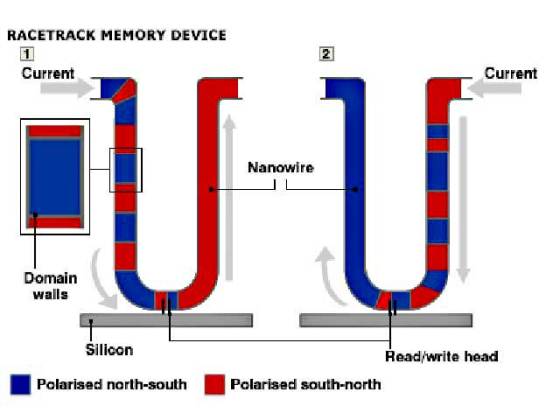Racetrack memory could significantly speed up computing
 Imagine a computer equipped with shock-proof memory that’s 100,000 times faster and consumes less power than current hard disks. Professor Mathias Kläui from EPFL and PSI is working on a new kind of “Racetrack” memory, a high-volume, ultra-rapid non-volatile read-write magnetic memory that was invented at IBM and may soon make mentioned features possible.
Imagine a computer equipped with shock-proof memory that’s 100,000 times faster and consumes less power than current hard disks. Professor Mathias Kläui from EPFL and PSI is working on a new kind of “Racetrack” memory, a high-volume, ultra-rapid non-volatile read-write magnetic memory that was invented at IBM and may soon make mentioned features possible.
Although hard disks are becoming cheaper and can store much larger quantities of data, their speed hasn’t been increased a lot, so every time a computer boots up, 2-3 minutes are lost while information is transferred from the hard disk into RAM (random access memory). The global cost in terms of lost productivity and energy consumption runs into the hundreds of millions of dollars a day.
Similarly to VHS cassette, the proposed solution involves data recorded on magnetic tape. However, in this system the tape would be a nickel-iron nanowire which is million times smaller than the classic tape. And unlike the magnetic videotape, in this system nothing moves mechanically. The bits of information stored in the wire are simply pushed around inside the tape by spin polarized current, reaching the speed of several hundred meters per second in the process. It’s like reading an entire VHS cassette in less than a second.
In order to improve data reading, each bit of information must be clearly separated from the next so that the data can be read reliably. This is achieved by using domain walls with magnetic vortices to delineate two adjacent bits. To estimate the maximum velocity at which the bits can be moved, Kläui and his colleagues carried out measurements on vortices and found that the physical mechanism could allow for possible higher access speeds than expected.
Racetrack memory promises to be a real breakthrough in data storage and retrieval. According to its developers, Racetrack-equipped computers would boot up instantly, and their information could be accessed 100,000 times faster than with a traditional hard disk. This tech would also save energy because Racetrack memory doesn’t needs to be powered every millionth of a second like today’s conventional RAM, energy consumption could be slashed by nearly a factor of 300, to a few mW while the memory is idle (an idle computer consumes up to 300 mW to maintain data in RAM).
Their results were published online October 25, 2010, in the journal Physical Review Letters. Scientists at the Zurich Research Center of IBM (who are also developing Racetrack memory) have confirmed the importance of the results in a Viewpoint article. Millions or even billions of nanowires would be embedded in a chip, providing enormous capacity on a shock-proof platform. The developers claim that a market-ready device could be available in 5-7 years.










so nice